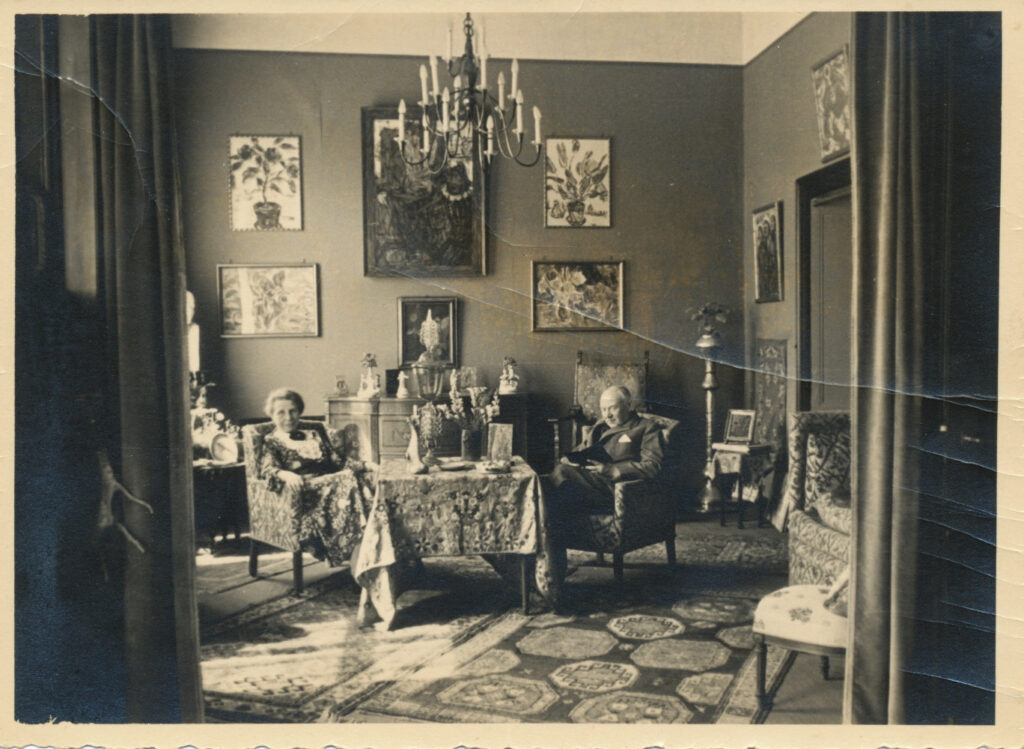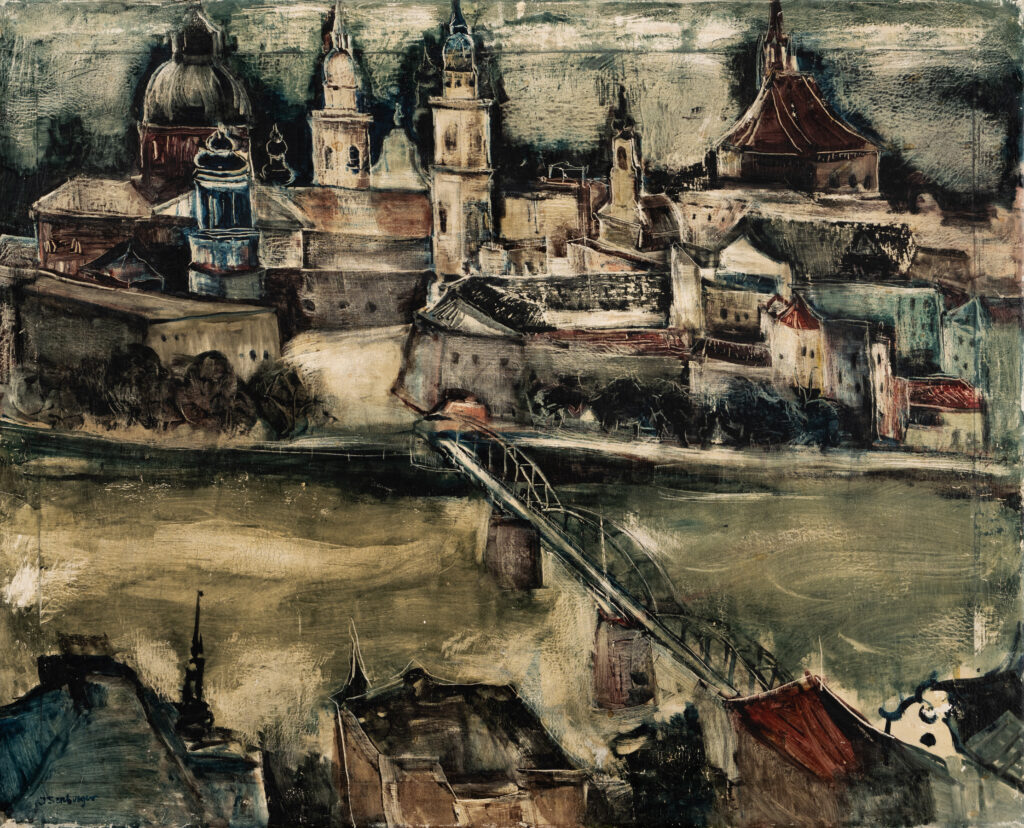Archive
Archived 24 September, 2025
Strauss Archive from Wuppertal to Leo Baeck Institute, N.Y.
New York. In collaboration with the Leo Baeck Institute, accessioning and digitizing the Artur and Lucy Strauss archive will begin this summer in New York. Strauss, a physician and cousin of Else-Lasker Schüler, was a member of the Jung Wuppertal group of poets and a naturally gifted artist. Although he made the practical decision to study medicine rather than art as a young man, the muses never abandoned him. As members of the assimilated Jewish middle class, he and his wife (née Hertz) were avid collectors and patrons of the arts in Barmen — once a vibrant modernist center and today a part of Wuppertal. Unable to obtain immigrant visas and join their son Arnold, also a physician, who had emigrated to the USA two weeks after the photograph below was taken, Artur and Lucy committed suicide in The Hague in September of 1940. This voluminous and historically important collection, which consists largely of correspondence from 1919 to 1948, represents an inexhaustible source of political, cultural and psychological commentary from the Weimar Republic through the Nazi Era. Once digitizing has been completed, materials written in Kurrentschrift and Antiqua from the years 1933, 1935 and 1938 will be used to train models for an AI-supported pilot project with Transkribus.

Lucy and Artur Strauss, Barmen (Wuppertal), 1935. Paintings by Christian Rohlfs, Paula Modersohn-Becker and Ewald Platte can be seen on the back wall.
On 25 July 1935, Lucy and Artur Strauss arranged to be photographed one last time at home in Barmen before packing everything they owned, including the art collection, library and family archive for shipment into an unknown future. “In the room in Hütt’s factory our things look like so much rummage from the junk man. It was impossible to imagine that it all came from a cultivated household and that it might be put back together into one someday. I lacked the courage to go back into the room after the movers left. Artur likened it the next day to standing on the ruins of Carthage. But, alas, we’re free and hope that the moths will not develop an appetite for our carpets and upholstery and that, with happy hearts, we’ll see many beautiful things in the world before we once again make our Strauss’s nest. Yes, if only one could travel as one pleased, as was possible in my younger years! Let’s hope for the best, dear reader.” (Lucy Strauss). © 2025 the estate of Artur and Lucy Strauss, USA.
Archived 8 October, 2024
Eric Isenburger’s “Salzburg” at the Lentos Kunstmuseum, Linz
Linz, Austria. Only 6 weeks remain for the Lentos Kunstmuseum’s record-breaking exhibition “Die Reise der Bilder”. The exhibition, part of a larger European Capital of Culture project, concerns the fate of artworks hidden away in Austria’s Salzkammergut region after 1943. Our catalog chapter, Hiding the Works 1933/Versteckte Kunst 1933 departs from the exhibition’s historical focus to trace Frankfurt refugee artist Eric Isenburger’s painting Salzburg from Wolfgang Gurlitt’s gallery in Berlin to the Galerie Moderne in Stockholm. The painting itself, one of few pre-1942 Isenburgers anywhere with a provenance, will be on display throughout the exhibition in homage to those many artists who were forced to hide their own works after Hitler became Chancellor. The exhibition closes on 8 September.
The exhibition catalog, which is in German only, can be ordered here.
The illustrated English version of our essay can be read here.

Eric Isenburger. *1902 Frankfurt am Main, New York, ✡︎1994. Salzburg, 1931/32. Oil on canvas, 80 x 65 cm. Private collection Berlin. © Shmuel Elen. Photo: Christoph Petras, art-repro Berlin.